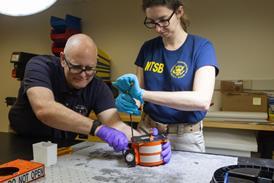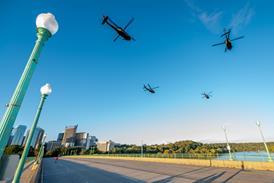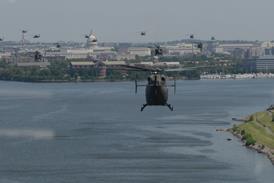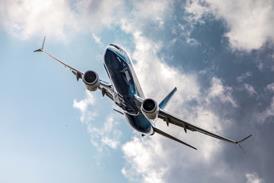A team of Honeywell, Sikorsky and Universal Avionics has completed the first phase of test flights to develop precision approach procedures for helicopters using differential global positioning system (DGPS) guidance.
"We're very encouraged," says Sikorsky engineering test and project pilot Dave Wright. "Now we have a very good handle on what we need to do from here on," he adds. The team is helping the US Federal Aviation Administration develop rotary wing precision terminal procedures (RPTERPS), which will allow users to take advantage of the helicopter's capabilities, rather than be limited to the same instrument landing procedures as those for fixed wing aircraft.
"This is really the first cut, using off the shelf boxes to try to get a 6¹ approach with deceleration to as low a minimum height as possible," says Wright. The current trial uses an S-76B equipped with a Universal UNS-1B flight management system (FMS) loaded with developmental software, a Universal GPS 1000 receiver and a VHF datalink radio. The helicopter flew precision DGPS approaches to Deer Valley, Arizona, using a Honeywell/ Pelorus satellite landing system. The S-76B was equipped with a Honeywell four-axis autopilot, and was flown on fully coupled automatic approaches down to around 100ft (30m).
The helicopter will be upgraded with an improved FMS and faster datalink receiver before the next phase of RPTERPS tests in Florida in the third quarter of this year. Three basic standards are planned by the FAA: H1, an equivalent to the Category 1 instrument landing system, for hand flown approaches using basic global positioning system data; H2 for manual approaches using flight director guidance, and H3 for automatic approaches to a decision height of around 50ft while decelerating automatically to 15kt (25km/h).
"H3 is very do-able," says Wright, who adds that "-we're down to 100ft and 25kt now with a deceleration of 2ft/s/s".
Source: Flight International























